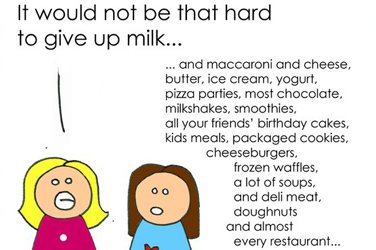Event professionals and their catering partners must be prepared to meet the needs of food-allergic event participants. It could mean the difference between an enjoyable experience or the unfortunate death of an attendee.
In honor of Food Allergy Awareness Week (May 11-18), here are 10 things you should know.
FACT #1
Globally, researchers estimate 220-250 million people may suffer from a food allergy. In the US, nearly 15 million people have food allergies. In Europe, 17 million people are afflicted.
FACT #2
A study released by The Centers for Disease Control and Prevention (CDC) in 2013 notes that the prevalence of food allergies in children increased nearly 50% between 1997 and 2011.

FACT #3
Every 3 minutes, a food allergy reaction sends someone to the emergency room. Annually, this results in approximately 200,000 emergency room visits and 200 deaths.
FACT #4
The economic cost of childhood food allergy in the United States is nearly $25 billion a year.
FACT #5
Research suggests that close to 50 percent of all fatal food allergies are triggered from food consumed outside of the home. That includes conferences, employee picnics, corporate dinners, etc.
FACT #6
Eight foods account for 90 percent of all allergic reactions worldwide:
- eggs
- milk
- wheat
- soy
- shellfish
- fish
- tree nuts
- peanuts
In the US, the top eight allergens must be identified on all packaged foods. The European Union adds gluten (found in wheat, rye and barley), celery, mustard, sesame, lupin and sulphur dioxide to its list of major allergens. Health Canada includes identification of mustard, sesame and sulphites.
FACT #7
There is no medicinal cure for food allergy. The only way to prevent a reaction is strict avoidance of the allergen.
FACT #8
Food allergy is NOT the same as food intolerance, gluten sensitivity or celiac disease. Food allergies are an immune system response to a typically a harmless food protein that when ingested the body deems a threat and triggers a reaction. Symptoms can be mild (rash, itching, hives, swelling) to severe (wheezing, loss of consciousness) and anaphylactic, a potentially fatal allergic reaction that happens quickly. Food Intolerances and gluten sensitivity effect the digestive tract and do not typically maniferst life-threatening reactions.
Celiac disease is an autoimmune disease affecting the small intestine and digestive tract. It is caused by an abnormal reaction to gluten, a protein found in wheat, rye and barley which in turn can cause serious complications, including malnurishment and intestinal damage.
FACT #9
Eating away from home significantly increases risk for individuals with food allergies.
FACT #10
Food allergies adversely affect quality of life. Detriments can range from internal stress and anxiety, to bullying at school and feelings of exclusion at food functions.
What can you do to help?
- Become an advocate for your guests with food allergies.
- Improve your registration process so you know their needs.
- Label allergens on buffets or in menus to decrease attendee anxiety.
- Communicate with the chef and banqueting captain so you and all the servers understand what ingredients are present in the food being served and how to provide options, if needed.
- Don’t forget to also gather allergy information from exhibitors, speakers, sponsors and other people included in meal functions.
Help build broader support food allergy awareness in Congress
Visit the FARE Action Center and click on the Build Congressional Awareness Resolution action item to contact your representative. Urge them to cosponsor the Congressional resolution by Congressmen Steve Israel (NY) and Michael McCaul (TX) to recognize Food Allergy Awareness Week. The text of the resolution is available here.
Here’s what I’ll be sharing the rest of this week.
Tuesday — A Closer Look at Wheat, Milk and Egg Allergens
Wednesday — 5 Ways to Advocate for Your Food Allergic Event Participants
Thursday — A Closer Look at Tree Nut and Peanut Allergens
Friday — Frequently Asked Questions (Have one? Send it to tracy@thrivemeetings.com)
Saturday — A Closer Look at Soy, Shellfish and Fish Allergens
Cartoon by Tiffany Glass Ferreira
Infographic by FARE




1 Comment
Swapnil
Great article in Forbes today! Even beettr, I appreciate that each day of FAAW you are posting!Keep up the good work…I’m going to check out some of your recipes. Thank you for all that you do for our food allergy community. It does take a village.
Comments are closed.